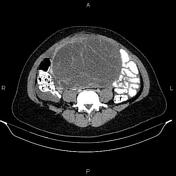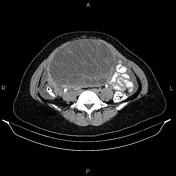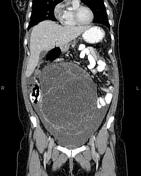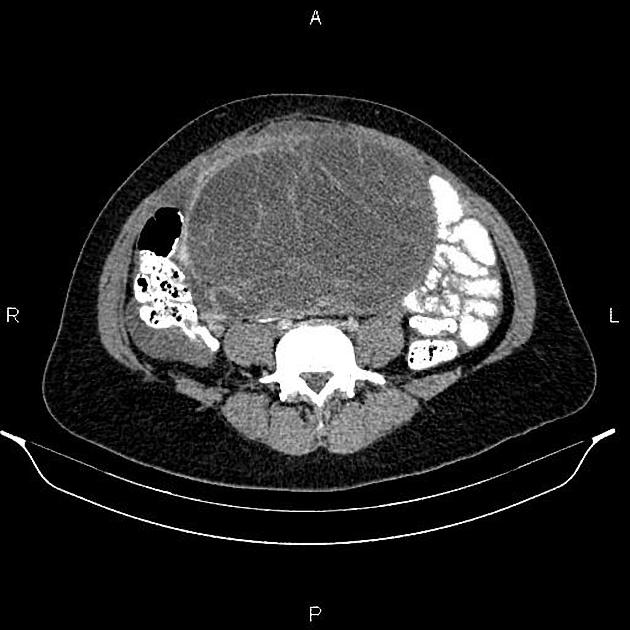Presentation
Abdominopelvic pain and progressive distension.
Patient Data
Age: 30 years
Gender: Female
From the case:
Ovarian serous cystadenocarcinoma








Download
Info

A 220×150×210 mm multiseptated cystic lesion arising from the pelvis and extends until the level of the renal hilum. The right ovary couldn’t be defined separately from the mentioned mass. Some abdominopelvic free fluid is also evident.
An IUD is present within the uterine cavity in the appropriate station.
Case Discussion
Ovarian multiseptated cystic lesion pathology proved serous cystadenocarcinoma which is the malignant form of ovarian serous tumor, the most common type of ovarian epithelial tumor. It is the most common type of ovarian malignancy.




 Unable to process the form. Check for errors and try again.
Unable to process the form. Check for errors and try again.